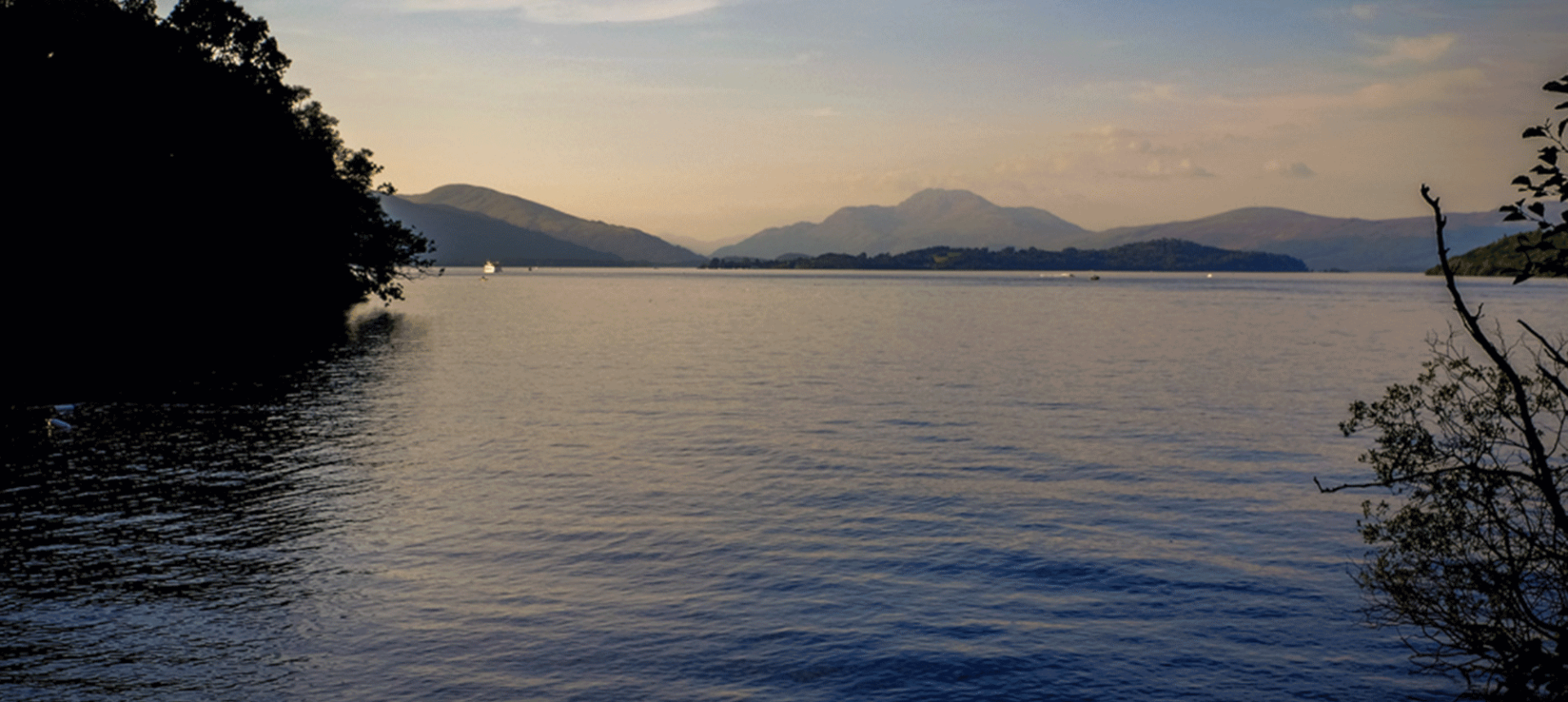Interesting Facts About Loch Lomond
January 27, 2023
Straddling the Scottish Highland Boundary Fault Line, Loch Lomond & The Trossachs National Park boasts some of Scotland’s most stunning scenery in the form of mountains, rolling hills and silvery lochs. Loch Lomond lies at the heart of the National Park, with 22 islands surrounding its 24-mile-long body of fresh water. On the eastern shore you will find various footpaths, cycle trails, the Ben Lomond mountain and tourist’s favourite Conic Hill. Across the loch lies Luss village, home to ancient stone cottages, rolling countryside and tourist hotspots.
Whether it’s a day trip, weekend visit or mid-week escape, Loch Lomond is the perfect place to explore. Plus, there’s plenty of restaurants and self-catering accommodation if you want to prolong your visit. These 10 facts about Loch Lomond will help fuel your need for adventure and escapism to the countryside.
1. The Depth and Width of Loch Lomond
Loch Lomond is a freshwater Scottish loch and is the largest inland stretch of water in Great Britain. Approximately 36 kilometres long, with varying widths of 1 – 8 kilometres and a maximum depth of around 153 metres in the deeper, more northern section of the loch. The southern shores of Loch Lomond are only a mere 14 miles northwest of the centre of Glasgow, one of Scotland’s largest cities.
2. Loch Lomond Isles
Three of Loch Lomond’s Islands are in the care of conservation agencies who protect and preserve the beauty of Scotland’s treasured landscapes. Inchcailloch is part of Loch Lomond’s National Reserve whilst the National Trust takes care of Bucinch and Ceardach. The remaining islands are all privately owned and maintained. Check out our blog post on all the isles in Loch Lomond and how you can visit them here.
3. Inchmurrin Isle
Inchmurrin is not only the largest Loch Lomond Isle but is also the largest inland island in the UK. Its name comes from the chapel of St Mirren which once stood on the Island. At the south-west tip of the island lies the ruins of the 14th century castle built by Duncan, the 8th Earl of Lennox. The island was also visited by many notable figures including Mary Queen of Scots and Scotland’s national hero, Robert the Bruce. The island is now privately owned and managed by the Scott family who live and work there.
4. Wallace’s Isle
Wallace’s Isle is a low, flat island in the mouth of Inveruglas water, slightly south of the village of Inveruglas. As the old folk’s tale goes, this island was named after the great Scottish patriot, William Wallace, who sought refuge at the isle from the enemy. The island is now predominantly covered in alder trees which are conical in shape and can reach a great height of 20 metres and live to 60 years.
5. Inchlonaig Island
Inclonaig island, the most northern of the larger Loch Lomond Isles, situated north of Inchconnachan. Dominated by yew trees, and boasting a tranquil setting, this island is a common basecamp for campers looking for a more remote campsite in Loch Lomond. History tells us that Robert the Bruce planted these yew trees in order to make his archers bows before the 14th century Battle of Bannockburn.
6. Fraoch Eilean
Froach Eilean is a small island situated at the northern end of Loch Awe, a freshwater loch. The Scots Gaelic language translates Fraoch Eilean to ‘heather island’. This heather island is at its most beautiful and picturesque when the heather is in full blossom in early summer and early autumn.
7. Inchcailloch Isle
The name Inchcailloch means “Isle of the Old Woman” or “Isle of the Cowled Woman” in the Gaelic language. In the 8th century, an Irish missionary, St Kentigerna settled on the island to preach and spread Christianity. The island is said to be named after her. Inchcailloch is protected by the Loch Lomond National Nature Reserve and is a fantastic island to visit, providing many opportunities to explore its rich, natural and cultural heritage.
8. The Highland Boundary Faultline
The Highland Boundary Fault is a huge fault zone that traverses Scotland from Arran and Helensburgh and separates two distinct terrains: The Highlands from the Lowlands. The fault line runs in a south-west direction through Loch Lomond’s islands including Torrinch, Creinch and Inchmurrin. The view from the top of Conic Hill provides the most spectacular views of the fault line.
9. Loch Lomond Wildlife
The Trossachs National Park is brimming with wildlife and a picturesque walk through the forestry might result in a magical encounter with one of many deer species that inhabit and roam Loch Lomond. Migrating from Africa in spring to autumn comes ospreys, powerful and majestic birds of prey. Along the eastern shore of Loch Lomond is where you’ll find the ospreys. Loch Lomond is also home to various mammals including badgers, bats, beavers, red squirrels and seals. Check out our blog post on nature in Loch Lomond for all the info you need.
10. Ben Lomond
Ben Lomond is one of Scotland’s most climbed Munros, rewarding over 30,000 annual visitors with beautiful views across Loch Lomond towards the northern hills and the Trossachs National Park to the east. This Scottish mountain has a summit of more than 3,000 feet. And whether you choose to walk up and down the well-laid tourist trail or a circuit via Ptarmigan Ridge, make sure you stop along the way and look out towards the dramatic landscape. If you’re looking to take on a Munro, read our guide here.

